Nothing says Texas more than pride. Texans are obsessed with the history and culture of their state and express their pride at any given chance.
When you consider its rich history, diverse landscape, world-famous landmark sites, country music, wildlife diversity, and cuisine, you can forgive the unabashed pride with which Texans talk about their Lone Star state. Not to mention the geographical size of the state; the choice is clear. It’s either you, “Go big or go home.”
Texas is within the South Central region of America. It’s one of the Gulf states with a shoreline on the Gulf of Mexico. Texas is bordered to the west by New Mexico, to the east by Louisiana, to the north by Oklahoma, and to the northeast by Arkansas. It also has south and southwest boundaries with Mexican states, including Chihuahua, Coahuila, Nuevo León, and Tamaulipas.
It’s the second most populous state in the U.S. after California and one of the largest by land area, only second to Alaska. For context, Texas is more than twice the size of the United Kingdom and almost twice as large as Japan and Germany.
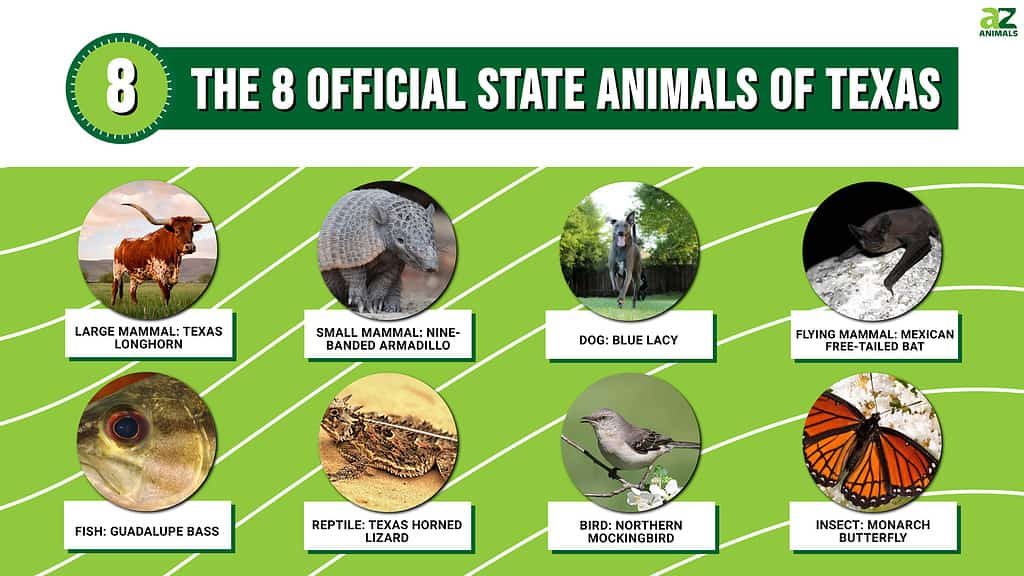
In Texas, numerous bird species have been discovered, accounting for roughly three-fourths of all species in the country. One of the more unusual species is ivory-billed woodpeckers, primarily found in the Big Thicket National Preserve of east Texas. Whooping cranes, once almost extinct, now winter in the protected Aransas National Wildlife Refuge.
Texas is also home to a diverse population of animals, insects, reptiles, and amphibians.
Official State Animals of Texas
The Republic of Texas was annexed into the U.S. and admitted as the 28th state of the Union on December 29, 1845. Like other states, Texas adopted symbols to best reflect its history, diversity, and culture. These are the state animals of Texas as designated over the years.
State Large Mammal: Texas Longhorn
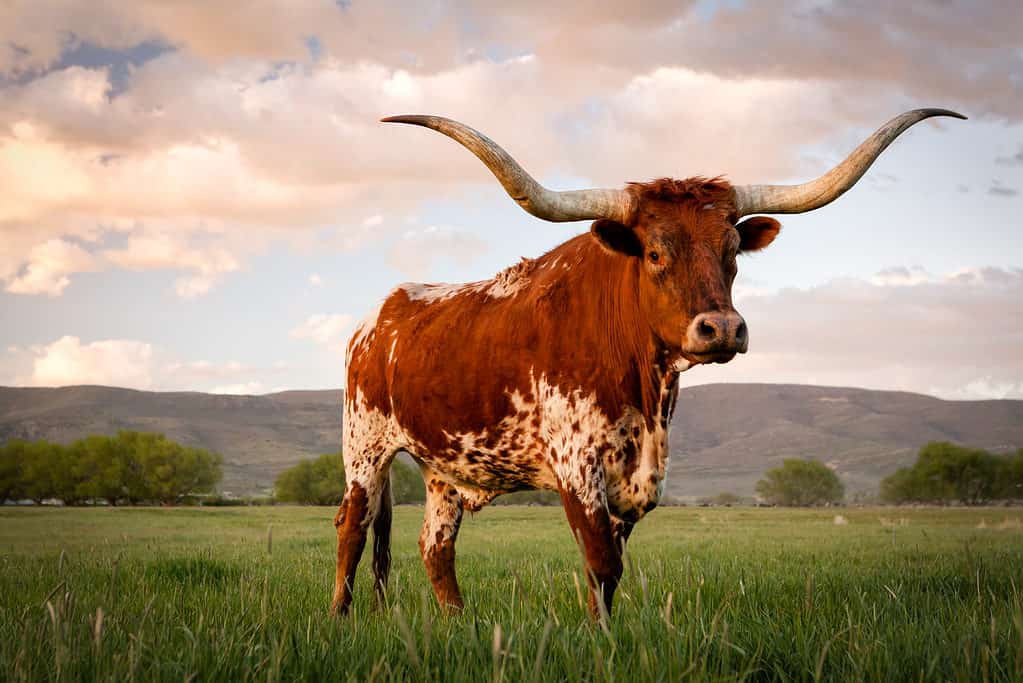
The North American breed cattle is the largest mammal in Texas.
©Quinn Calder/Shutterstock.com
The Texas longhorn became a representation of the Texas cattle drives in the 1860s and 1870s due to its reputation for being able to travel long miles in arid conditions, cross rivers, and endure desert heat and winter snow.
When Texas declared its independence from Mexico in 1836, the cattle had expanded over a sizable territory. The Red River to the Rio Grande, the Louisiana border in the east, and the upper breaks of the Brazos River in the west were all within their range. As a result, the early longhorns roamed Texas untamed up until the end of the Civil War.
Before the official designation by the state legislature in 1995, this cattle breed had long been a part of the state’s cultural heritage. In 1916, a longhorn steer named Bevo was adopted as a mascot of the University of Texas at Austin. The Texas Longhorns, the school’s football team, came to be widely recognized by the image of the animal.
The North American cattle is the largest mammal in Texas. They are distinguished by their large, thick horns, which can measure more than eight feet in length from tip to tip. Their coat color varies from red and white to brown and black.
Ranchers began to view longhorn cattle as a less attractive breed around the beginning of the 20th century. As a result, the population of longhorn cattle decreased as they preferred European varieties that produced more beef per animal.
Early in the 1920s, western author J. Frank Dobie noticed a fall in the number of Texas longhorns. The breed had a special significance in Texas history; thus, he believed it was necessary to conserve it.
Rancher Graves Peeler and businessman Sid Richardson assisted Dobie in acquiring a herd of typical longhorns. In 1941, they gave the animals to the Texas Parks Board to serve as the state herd. In 1948, the board decided that Fort Griffin State Park, now Fort Griffin State Historic Site, managed by the Texas Historical Commission, would operate as the permanent habitat of the longhorns.
State parks with longhorns include Lyndon B. Johnson, San Angelo, Cooper Breaks, and Palo Duro Canyon.
State Small Mammal: Nine-Banded Armadillo
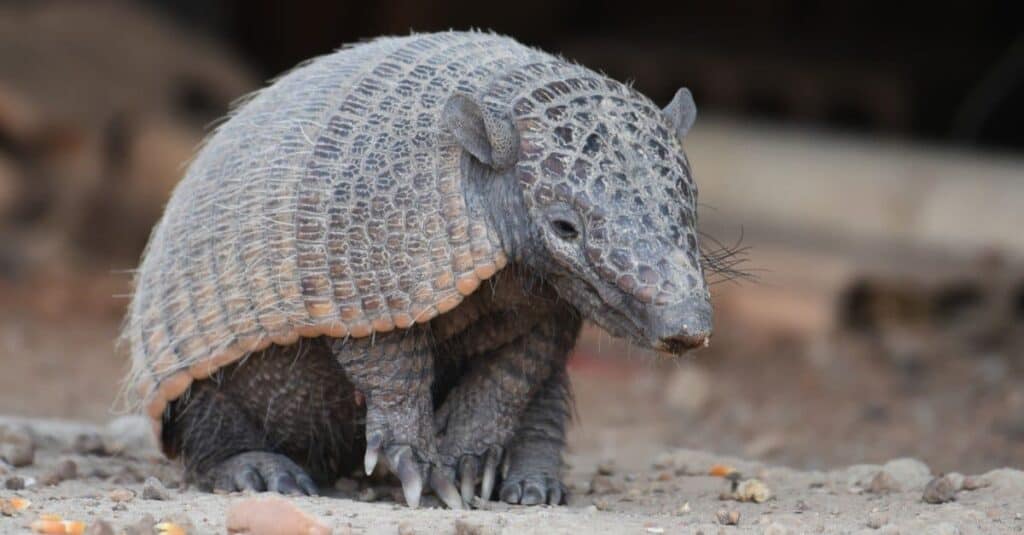
Armadillos are covered in bony plates that create their ‘armor’.
©iStock.com/Rini Kools
The widely distributed, cat-sized insectivorous, nine-banded armadillo is the Texan small state mammal that was adopted in 1927. It’s the only armadillo species in the U.S. and it’s found in a range of habitats, including grasslands, scrubs, woods, and rainforests. The armadillo’s bony, scaled shell shields it from predatory attacks, and its body length varies from 15-17 inches. They typically live between 7-20 years in the wild.
Nine-banded armadillos are notorious diggers; they make burrows and dig for food. This implies they can’t survive in areas with difficult-to-dig soil.
They feed on invertebrates such as grubs and ants. However, small reptiles and amphibians, along with the eggs of mammals, reptiles, and birds, make up a smaller portion of their diet.
Their abandoned burrows often benefit other species in the wild such as rabbits, pine snakes, mink cotton rats, and burrowing owls. While they primarily dig lawns for grubs, these mammals indirectly help humans as natural predators, but not without leaving a mess. Grubs are known for their immediate damaging effect on lawns.
Although originally native to South America, nine-banded armadillos are found in favorable habitats across Texas except for the western Trans-Pecos region. They are distributed to states, including Louisiana, Oklahoma, Mississippi, and Kansas.
Nine-banded armadillos are growing in population because humans have eliminated most of their natural predators. However, they still face some risks. Cars can easily run over them due to their small size, and they are often found dead along the roads. People who view them as pests on lawns may also poison, shoot, or catch them.
State Dog: Blue Lacy

The unique blue-color gene is present in all lacys, although not all are blue.
©Jessica Lobsinger/Shutterstock.com
What other dog breed could be deserving of the state honor than the home-bred blue lacy? Blue lacy got its name and rather interesting history in honor of four brothers — George, Ewin, Frank, and Larry. They immigrated to Marble Falls from Kentucky in 1858 and were the original breeders of the working dog.
The ranching brothers had reportedly crossed the greyhound, scenthound, and coyote to produce the blue lacy. It quickly gained notoriety in southwest Texas as an energetic ranch dog for herding, droving, hunting, tracking, and other ranch tasks. Blue lacys continued these labor activities on Texas ranches for over a century.
Search-and-rescue teams and government trappers now use descendants of the early lacys. They are also being rediscovered as good hunting companions.
It was formally recognized as Texas’s official state dog breed on June 18, 2005, when Governor Rick Perry assented to the legislation.
The breed came dangerously close to extinction as the number of family-run ranches decreased and all-terrain vehicles were introduced. Preservation initiatives have, however, increased their population since the 1970s.
They are primarily found in Texas, but their rising popularity has led to breeding communities in other states, Canada, and Europe.
The unique blue-color gene is present in all lacys, although not all are blue. Lacys come in shades of gray, from light silver to dark charcoal. The red-colored lacys range from light cream to rust, while the tri-colored ones feature a mix of these colors with the base as blue. Their eyes vary from bright orange to yellow.
State Flying Mammal: Mexican Free-Tailed Bat
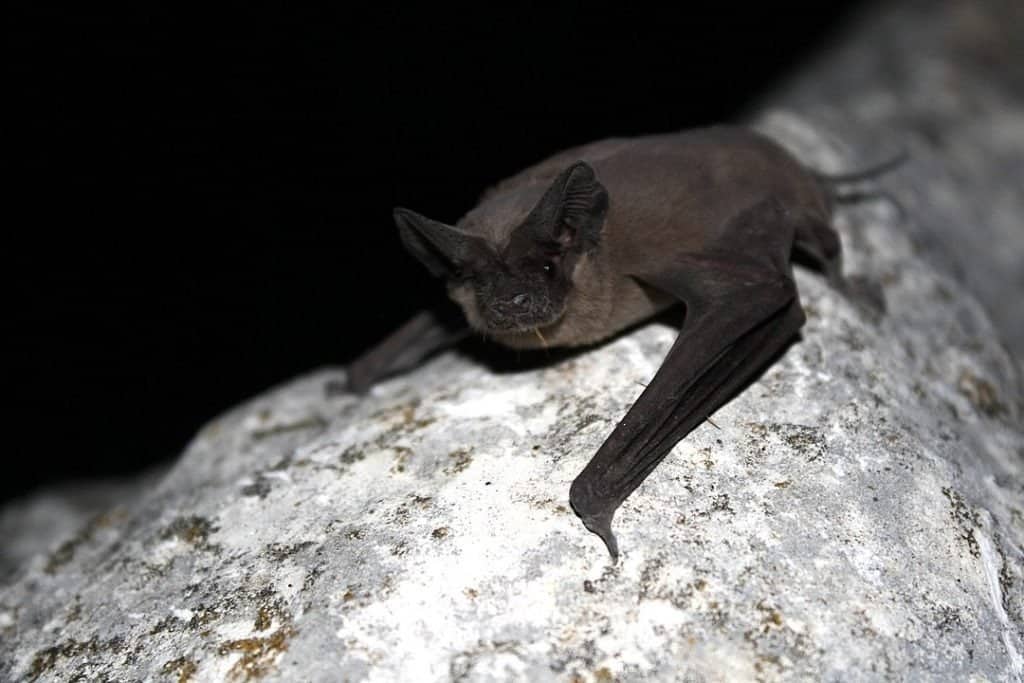
Texas is a popular tourist destination for bat-watching.
©U.S. Fish and Wildlife Service Headquarters / CC BY 2.0 – License
Interestingly, Texas is the nation’s battiest state — 32 of the 47 existing bat species in the U.S. reside there. What’s more, Texas is home to the largest known bat concentration in the entire world in Bracken Cave Preserve. The cave houses about 20 million Mexican free-tailed bats every summer. It is located on the northern outskirts of San Antonio. Bat Conservation International owns and protects the cave.
The state also hosts the largest urban bat colony, estimated at 1.5 million bats, at Congress Avenue Bridge in Austin, TX.
In May 1995, the Mexican free-tailed bat was given well-deserved recognition as the state flying mammal in appreciation of the importance of bats in a healthy ecosystem.
In late October or early November, when the first cold fronts hit the Texas Hill Country, the bats migrate to Mexico’s warm beaches, where they remain until the following spring.
Texas is a popular tourist destination for bat-watching. Some of the best bat-watching areas include Bracken Cave Preserve, Camden Street Bridge, Devil’s Sinkhole State Natural Area, Stuart Bat Cave, and Waugh Drive Bridge.
State Fish: Guadalupe Bass
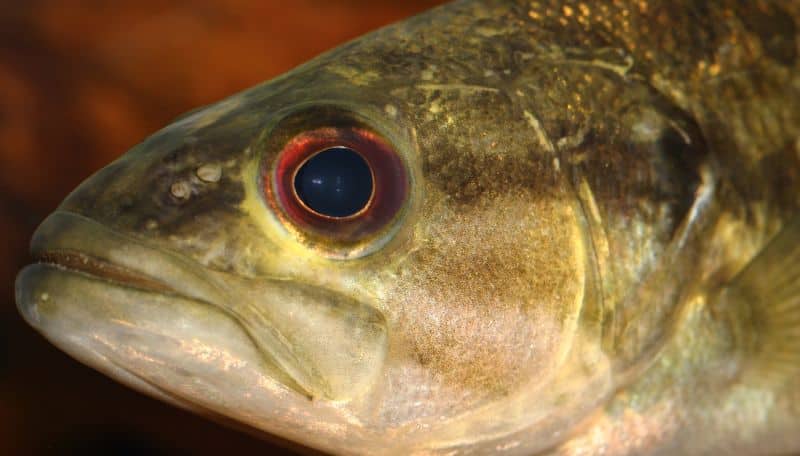
Guadalupe bass typically have lime to olive green color.
©Clinton & Charles Robertson from Del Rio, Texas & San Marcos, TX, USA / CC BY 2.0 – License
The Guadalupe bass is endemic to Texas. In fact, it got its name from the Guadalupe River, which runs from Kerr County. The widespread sport fish species belongs to the collective group known as black bass. Like most other species in the group, Guadalupe bass typically have lime to olive green color.
However, they are easily distinguishable from similar species in Texas. Their coloration reaches far lower on their body than the spotted bass, they lack the vertical bars found in smallmouth bass, and their jaws don’t extend past their eyes as in the case of largemouth bass.
It’s reputed for its appeal to fly anglers and fierce fighting spirit. It’s fond of strong currents and eats mainly insects. Thus, the Guadalupe bass earned the nickname “Texas brook trout.” It depends on swiftly flowing streams and small rivers to find food and fend off predators.
Dubbed the state fish in 1989, the Guadalupe bass is native to the Edwards Plateau’s northern and eastern regions. The areas include parts of the Brazos River drainage, the Guadalupe River above Gonzales, the San Antonio River headwaters, and the Colorado River north of Austin.
The Nueces River contains introduced populations of the Guadalupe bass. At the same time, small quantities can be found in the lower Colorado River. These are the places to go when you’re up for a fly fishing expedition.
Texas Parks and Wildlife Department (TPWD) and its partners have recovered or preserved fishable populations of Guadalupe bass in 14 central Texas rivers since 1991, despite the significant difficulty in addressing threats to the species. In addition, they stocked over 2.4 million Guadalupe bass fingerlings for conservation purposes.
State Reptile: Texas Horned Lizard

Though the Texas
horned lizard
prefers to feast on ants, it will eat other types of invertebrates.
©Seth LaGrange/Shutterstock.com
The Texas horned lizard was chosen as the state reptile 26 years after the TPWD categorized the species as threatened. The horned lizard is also popularly known as horny toad, horned toad, or horned frog, despite not being a toad or frog.
The lizard’s round body and blunt snout, which give it an amphibian-like look, earned it its well-known nickname. It can inflate its flat body to deter potential attackers, and insects are their primary prey.
The range of Texas horned lizards spans much of Texas, Oklahoma, Kansas, and New Mexico, as well as the south-central U.S. and northern Mexico. They live in open, sparsely vegetated habitats in dry and semiarid climates. They also enjoy loamy or loose sandy soils because of their penchant for digging.
State Bird: Northern Mockingbird
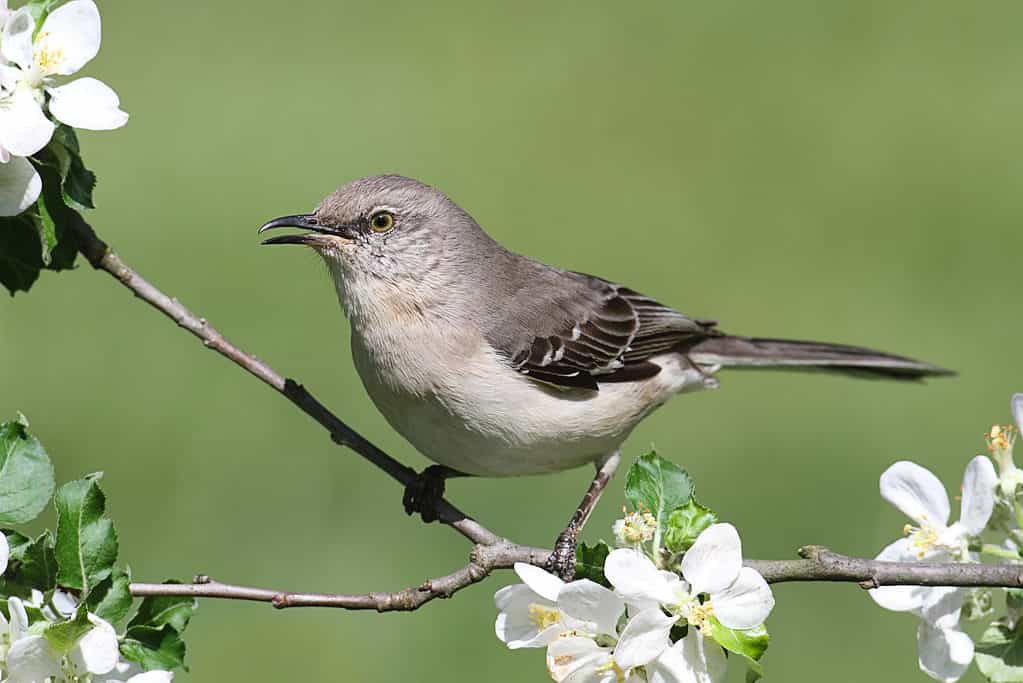
Mockingbirds are year-round residents of Texas.
©Steve Byland/Shutterstock.com
Texas became the first state to select a state bird on January 31, 1927, when governor Dan Moody signed off on the proposal to use the northern mockingbird. Then, Arkansas, Florida, Mississippi, and Tennessee caught the bug and designated the same bird as their respective official bird.
Mockingbirds are year-round residents of Texas. They can be found in all types of environments, including cities, forests, and deserts. The breeding season is when the males are most conspicuous due to their aggressive territoriality and frequent singing.
Mockers are known for their imitation prowess. They have been observed to perfectly mimic other noises they hear, such as other birds whistling, car horns, cackling hens, a ringing telephone, and dogs barking. Unfortunately, even an electronic analysis could not distinguish between the mockingbird and the original.
The northern mockingbird’s vast geographic distribution cuts across North America, Southern Canada, and Mexico.
State Insect: Monarch Butterfly
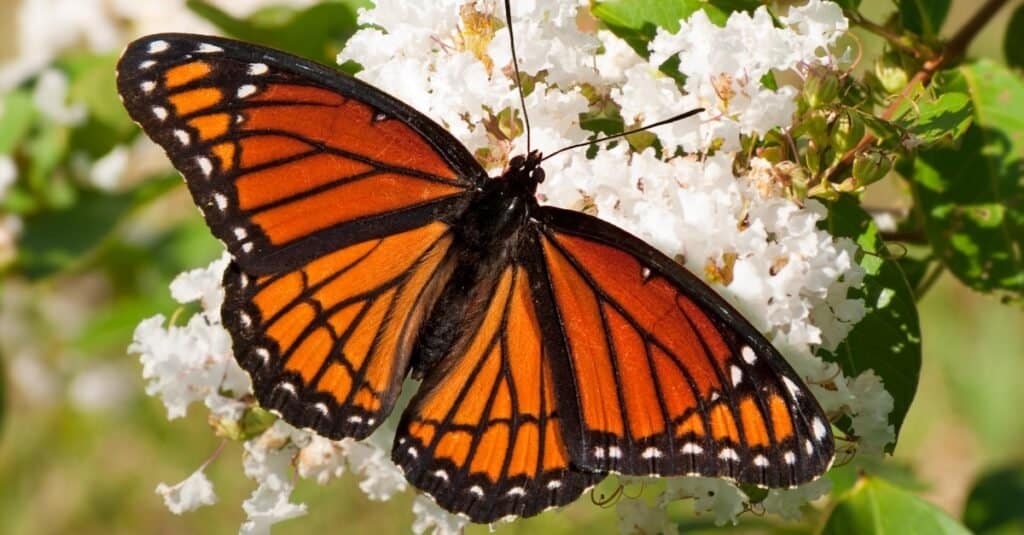
The monarch
butterfly
became the Texas state insect in June 1995.
©Sari ONeal/Shutterstock.com
Texas’ geographical position makes it possible to accommodate monarch butterflies during their bi-annual migration.
The butterflies spend the winter hibernating in the Mexican mountains until they move to Canada in the spring. Then, they lay their eggs in Texas and other southern states while traveling. Then, the butterflies make a pit stop in Texas to rest and eat before heading back to Mexico in August.
Generation after generation of butterflies has gone through this cycle repeatedly without becoming prey. The milkweed plant they consume contains a type of toxin that renders the butterfly unpleasant to birds and other animals.
The monarch butterfly became the Texas state insect in June 1995.
The photo featured at the top of this post is © iStock.com/DawnKey
Thank you for reading! Have some feedback for us? Contact the AZ Animals editorial team.






